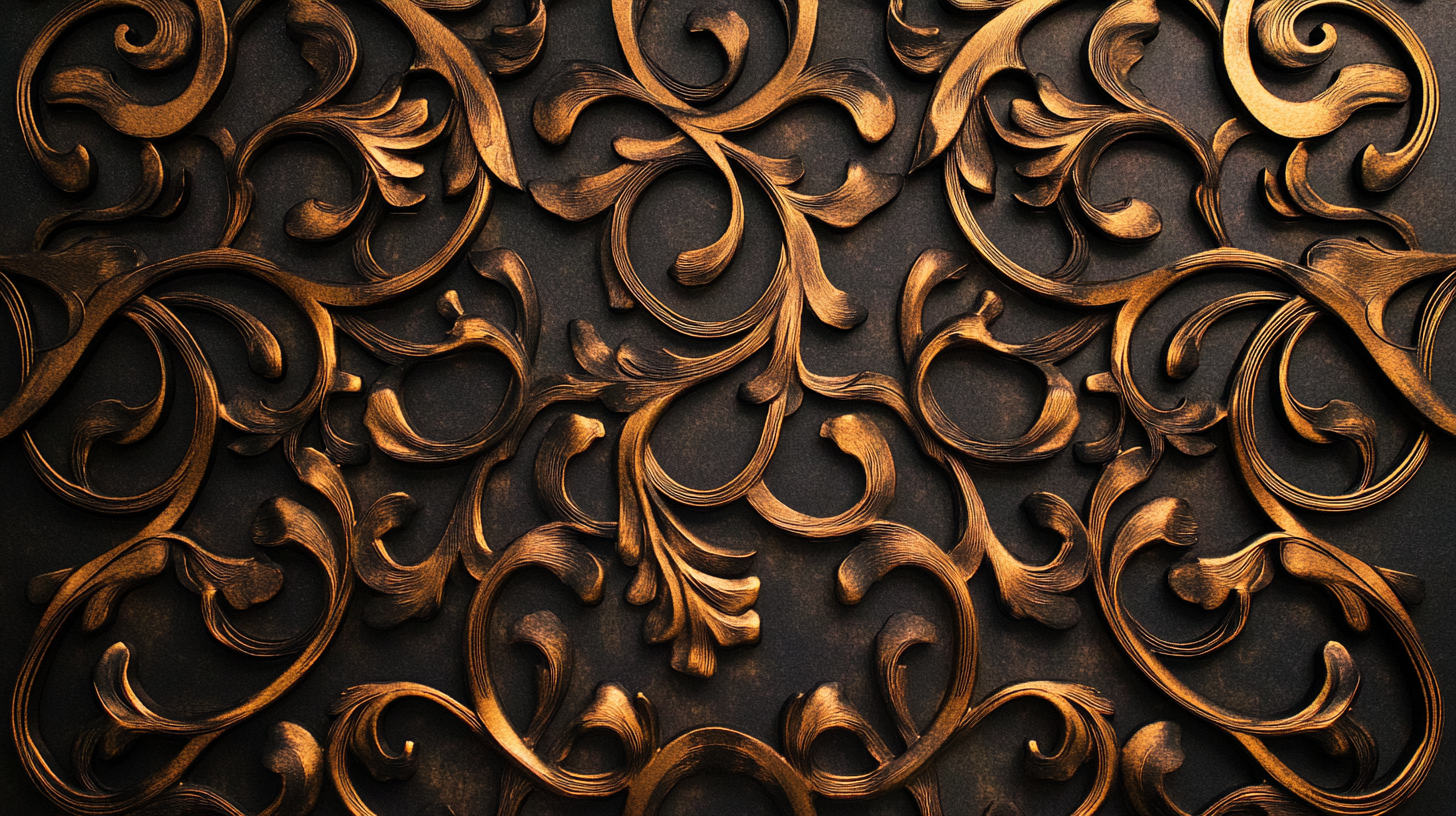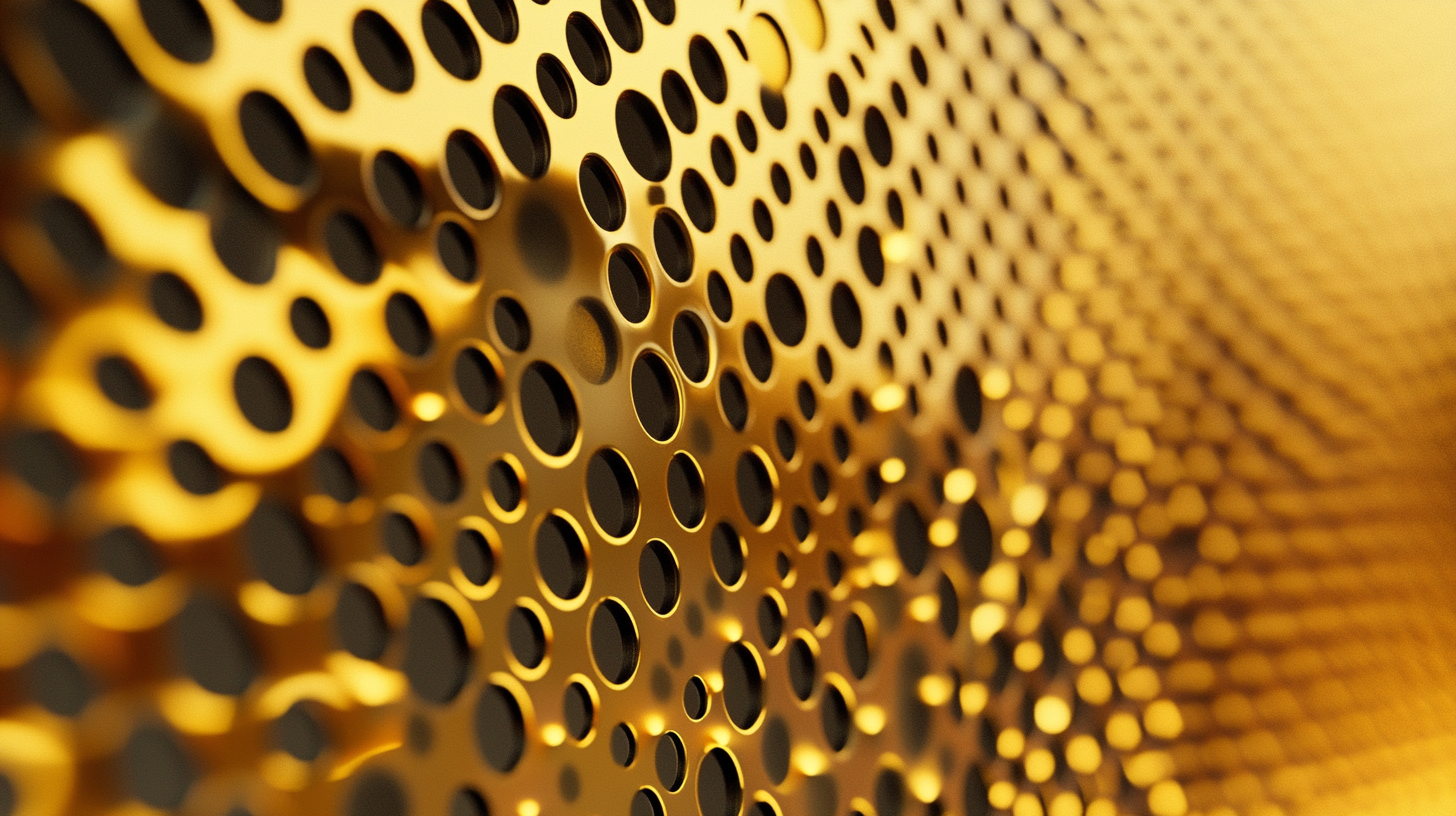In the realm of architectural and industrial design, the demand for aesthetically pleasing yet functional materials has witnessed a remarkable surge. According to a recent market research report by Fortune Business Insights, the global perforated metal market is projected to reach USD 1.5 billion by 2027, driven largely by the burgeoning construction and automotive sectors. Among the various products available, Decorative Perforated Sheet Metal has emerged as a versatile solution that combines elegance with practicality. This innovative material not only enhances visual appeal but also offers benefits such as improved airflow and weight reduction, making it an ideal choice for architects and designers worldwide. As China's manufacturing capabilities continue to surpass international standards, the country is becoming a pivotal player in supplying high-quality decorative perforated sheet metal that meets global quality benchmarks, thereby setting new trends in design and functionality across diverse applications.

The decorative perforated sheet metal industry is experiencing a surge in innovation driven by evolving design trends that prioritize aesthetics as well as functionality. According to a market analysis report by Grand View Research, the global perforated metal market is expected to reach approximately $3.5 billion by 2025, growing at a compound annual growth rate (CAGR) of 3.8%. This growth is largely attributed to the increasing demand for customizable architectural components, which enhance both the visual and acoustic properties of spaces.
One of the prominent trends in the design of premium decorative perforated sheet metal is the use of advanced CNC machining technology, allowing for intricate patterns and designs that were previously unattainable. This innovation not only contributes to the unique appearance of the materials but also increases their versatility in applications ranging from interior design to exterior facades. Furthermore, the integration of eco-friendly materials and production processes reflects a growing preference for sustainability in design. Reports from the American Institute of Steel Construction indicate that architects are increasingly opting for perforated metal solutions that combine aesthetic appeal with energy efficiency, reinforcing their commitment to green building practices.
This pie chart illustrates the market share distribution among different design trends in premium decorative perforated sheet metal produced in China. Modern designs lead the market with 35%, followed by classic and custom designs at 25% and 20%, while eco-friendly designs also hold 20% share.
In modern architecture, the use of perforated sheet metal has gained significant traction due to its versatility and aesthetic appeal. According to a report by Market Research Future, the global market for perforated metal sheets is projected to grow at a CAGR of 4.5% from 2021 to 2026, driven by increasing demand in construction and interior design. This material not only enhances visual dynamics but also integrates functional advantages, such as allowing for ventilation and light filtration while maintaining privacy.
Furthermore, perforated sheet metal can contribute to sustainability efforts within architectural design. A study conducted by the International Society of Sustainability Professionals emphasizes that using materials like perforated sheets can improve energy efficiency by reducing reliance on artificial lighting and ventilation systems. This approach not only results in cost savings for building operations but also aligns with global shifts towards environmentally friendly practices. As architects seek innovative ways to merge form and function, perforated sheet metal emerges as a commendable choice that meets both design aspirations and practical needs.
| Feature | Details |
|---|---|
| Material | Stainless Steel, Aluminum, Galvanized Steel |
| Applications | Architectural Facades, Partitions, Ceiling Tiles, Decorative Screens |
| Benefits | Aesthetic Appeal, Durability, Lightweight, Versatility |
| Customization Options | Sizes, Patterns, Finishes, Holes Size |
| Eco-friendliness | Recyclable Materials, Energy Efficient Production |
| International Standards | Compliant with ISO, ASTM, and other global standards |
The production of decorative perforated metal from China adheres to stringent quality standards that align with global norms. According to a report by Market Research Future, the global market for perforated metal is projected to reach approximately $3.5 billion by 2025, driven by the increasing application in architecture, automotive, and consumer goods. Chinese manufacturers have stepped up their game by investing in advanced technology and high-quality materials, ensuring their products meet international benchmarks such as ISO 9001 for quality management systems and ASTM standards for material properties.
In the realm of decorative perforated sheet metal, quality and aesthetics go hand in hand. A comprehensive analysis by Research and Markets highlights that perforated metals not only enhance visual appeal but also contribute to sustainability by allowing for energy efficiency in buildings through improved natural light and ventilation. Moreover, the precision in hole patterns and the finish of decorative perforated sheets significantly impact their functional performance and aesthetic value, with innovations in digital printing techniques further broadening design possibilities. As the industry evolves, China remains a pivotal player, delivering products that not only meet but exceed the evolving demands of international markets, thus reinforcing its position as a leader in the perforated metal sector.

Perforated sheet metal finds extensive applications across multiple industries, due to its versatility and functional properties. It is commonly used in construction for architectural elements, such as facades and ceilings, allowing for both aesthetics and ventilation. In manufacturing, perforated sheets serve as filters, enabling airflow and light while maintaining strength. Their lightweight nature makes them ideal for applications in aerospace, automotive, and furniture design, where reducing weight without compromising durability is essential.
Tips: When selecting perforated sheet metal for your project, consider the thickness and hole size, as these factors influence strength and performance. Additionally, think about the end-use application—different industries may require specific finishes, coatings, or materials to enhance durability and resistance to environmental factors.
Another significant area of application is in the field of industrial automation. The recent advancements in technology, such as improved gripping mechanisms for thin sheets, highlight the importance of precision in handling perforated metal. Companies are increasingly investing in equipment that ensures safe and efficient handling of these materials, ultimately improving productivity and reducing material waste.
Tips: Ensure that your handling systems are compatible with the type and thickness of perforated sheet metal you are working with. This will not only enhance operational efficiency but also minimize the risk of damage during transport and assembly.

The metal fabrication industry is increasingly recognizing the importance of sustainability and environmental considerations in production processes. According to a report by the Global Industry Analysts, the global market for sustainable metal fabrication is projected to reach $209.0 billion by 2027, reflecting a growing awareness of environmental impacts and the need for eco-friendly practices. As decorative perforated sheet metal is utilized in various applications, manufacturers from China have begun prioritizing materials and processes that minimize waste and reduce carbon footprints.
One key aspect of sustainable metal fabrication is the use of energy-efficient technologies. A study by the American Council for an Energy-Efficient Economy highlights that industries adopting energy-efficient practices can reduce their greenhouse gas emissions by up to 25%. Moreover, employing recycled materials not only conserves natural resources but also significantly decreases the overall environmental impact. For instance, using recycled aluminum can save up to 95% of the energy required to create new aluminum from raw materials. This shift towards sustainability is not merely a trend but a necessary evolution in the industry to meet global standards and tackle climate challenges effectively.
This chart illustrates the percentage of sustainability practices implemented in the manufacturing of decorative perforated sheet metal in China, highlighting key areas such as material sourcing, production waste management, and energy usage efficiency.
